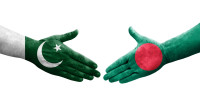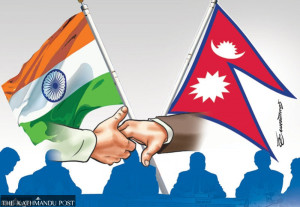Columns
Groundwater quality and quantity are linked, and neither are improving
Decreased groundwater recharge due to peripheral development combined with increasing extraction rates causes the water table to lower every year..jpg&w=900&height=601)
Madison Wrobley
When the test results came back, we assumed there must have been a mistake. The water sources we use every day, like the jars and the tanker water we purify with a reverse osmosis machine both tested positive for E. coli with a coliform count that was off the charts. Our well water vastly exceeded both Nepal’s and the WHO’s standards for chemical contaminants. This is a familiar story in Kathmandu and one we know well as water researchers, so the results should not have been so shocking. Seeing these numbers on the page forced me to confront the fact that my water sources were not outliers. They were just as contaminated as my neighbour’s, as the person’s who lives across the city.
More than bacteria
“Kathmandu’s deep groundwater is really bad. A lot of it is similar in quality to wastewater, with similar contaminants at similar levels,” Tyler McMahon— an international advisor to SmartPaani, an organisation working to provide sustainable water through rainwater harvesting and filtration—explains. But despite the poor quality, 80 million litres of groundwater is extracted daily, or the equivalent of filling about 213 standard-sized swimming pools every day. This water is pumped from deep underground by Kathmandu Upatyaka Khanepani Limited (KUKL) to be distributed through their pipe network, by private jar and tanker companies, and through household borings.
Most public health initiatives focus on bacterial contamination caused by faulty sewer systems and polluted runoff. The Department of Health Services found that between 2016 and 2017, water-borne diseases caused by these bacteria accounted for 15 percent of all treated illnesses in Nepal. But the number of cases is likely much higher because many do not seek medical treatment. While it is clear that biological contamination poses widespread and immediate threats, many other contaminants such as elevated levels of ammonia, iron, manganese, and nitrates can be equally dangerous and economically costly. However, this aspect of water quality is often less prioritised due to the long-term nature of the health consequences and a lack of public awareness.
The full effects of using water with elevated levels of these naturally occurring minerals and heavy metals are not fully known, nor is the threshold at which they become a problem. Research has shown that consuming too much iron affects the kidneys and digestive system. While the level required to cause these health problems is likely much higher than what is found in Kathmandu’s drinking water, iron-hard water from borings can cause skin irritation, stain clothes and water tanks, clog pipes, and increase operational costs for water companies. Elevated levels of ammonia and nitrates also cause hair dryness and skin problems, while manganese is thought to irritate the throat.
Land-use changes exacerbate contaminate levels
The condition of Kathmandu Valley’s groundwater has changed rapidly in the past few decades. The beginnings of this decline are correlated with development in areas outside of the core city. Part of this is because as the land value increased in the valley, landowners, particularly those in peripheral areas whose land was sandy, realised they could profit more by selling their land as sand rather than by continuing to farm it, describes Madhukar Upadhya, a watershed expert. These peripheral areas had been essential for their ability to store water which helped regulate runoff and facilitate groundwater recharge.
Instead of sandy soil, the land is increasingly covered in concrete, so water does not percolate through the ground to the aquifers. Instead, it flows directly to the rivers, contributing to the annual urban flooding. This is exacerbated by other changes in land use such as the switch from rice to vegetable cultivation or increasingly, leaving land fallow. Land without a cover crop does not hold water, so it acts like pavement during the deluges of the monsoon and disrupts the recharge cycle.
Decreased groundwater recharge due to peripheral development combined with increasing extraction rates causes the water table to lower every year. Even just 50 years ago, no one would have considered digging hundreds of meters to access groundwater, but this has become necessary as the once plentiful and clean shallow sources no longer meet demand. Because of this, even household borings must be dug deeper. Ammonia, manganese, iron, and nitrates are already found naturally at these depths, and depleting water levels concentrate the compounds and cause them to become hazardous. ‘This is the present and it will only get worse the deeper we go as we extract water from depths where these contaminants are present at such high levels. I think people will want to leave the valley in the future because it will be so difficult to access clean water,” describes a master’s student in interdisciplinary water resource management.
The increased level of contamination is cause for concern in itself, but the much bigger problem is that the choices we make with our natural resources now, the way we develop the periphery of the valley and our constant demand for more water forcing us to dig ever deeper—all mean that unless action is taken, the water that flows through and under this city will not only remain contaminated but will eventually become virtually unusable. For future growth to be sustainable and healthy, decisions should be made with a deep understanding of the connection between groundwater quality and quantity.
Purnima Acharya helped research for this opinion article.
What do you think?
Dear reader, we’d like to hear from you. We regularly publish letters to the editor on contemporary issues or direct responses to something the Post has recently published. Please send your letters to [email protected] with "Letter to the Editor" in the subject line. Please include your name, location, and a contact address so one of our editors can reach out to you.




 9.12°C Kathmandu
9.12°C Kathmandu















